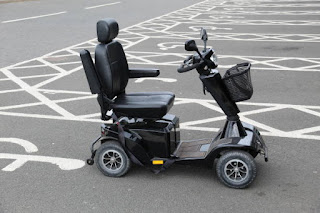Why should hospitals keep motorized wheelchairs?
Physically challenged people, the elderly, and the ill find it challenging to travel from one location to another without the assistance of others because their physical health necessitates assistance. Even a wheelchair can aid with such issues, but it still needs one person's assistance to go from one location to another. In particular, there is a nurse shortage in hospitals, and patient caregivers are unable to relocate from one location to another. Patients depend entirely on them. This suggested system's goal is to move the vehicle without relying on another and is designed to be user-friendly.
For persons who are physically challenged, patients, and the elderly, more study has been done on electric vehicles and electric tricycles in the last ten years. Particularly within the home and hospitals, traditional wheelchair-moment vehicles are still employed almost everywhere. One assistance was necessary during these wheelchair occasions. The helper might be a nurse, ward boy, or a close friend. The wheelchair cannot be moved from one place to another without their assistance.
These assistants are able to stay with patients for extended periods of time. The sufferer can feel bad for asking others for assistance. Three-wheeled petrol scooters were introduced as a solution to these issues. These three-wheel scooters are well-balanced, but they are more expensive. More than 40,000 rupees are involved. In addition, it costs 100 rupees for each 30 to 50 kilometres of trip. People who are in poverty or close to it cannot afford it. New technology is igniting interest in electric vehicles.
The electric car offers additional benefits, such as no noise, no pollution, and a seamless start and stops mechanism, but the price of these high-end, market-exciting vehicles was a deterrent. Average and below-average folks cannot afford it. The suggested electric vehicle-based wheelchair system uses the same idea. This operation's strategy and tactics are similar to those of an electric car. Here, we may use a microcontroller actuator or relay system to apply electricity.
Let’s see what research indicates
According to research, more than half of long-term SCI survivors alter their equipment to maintain their mobility, function, and independence, or to maintain the well-being of their attendants and carers.
A study of 279 British SCI survivors found that 59% had upgraded their durable medical equipment, buying new wheelchairs, cushions, hoists, and lifts to facilitate transfers. All of the participants in the research had been wounded for at least 20 years. Nearly 25% cited weakness and/or exhaustion as the reason for the change. Medical issues were noted on the same number. Others claimed ageing, stiffness, discomfort, and other issues.
So, even reports suggest many people buy new wheelchairs and spend their money on various other types of equipment. But instead, the buyer should have a one-time investment by buying a powered wheelchair as it can help the patient feel more independent and happy. As no one likes when they are treated differently able and powered wheelchairs help to bring the best out of them as it provides a sense of freedom and independence.
The only problem is that powered wheelchairs are a hefty investment and many in the world don’t have that kind of money to put in. But hospitals can. As, if they provide more good services like proving powered wheelchairs they can efficiently use their workforce and help the patients in dire need rather than making anyone suffer. So, hospitals should consider keeping motorized wheelchairs for their patients.
Conclusion
Despite their increasing popularity, many elderly, disabled, or injured persons still cannot afford a motorized wheelchair. Money is the major barrier in the way of someone wants to purchase a motorized wheelchair. However, hospitals can simply buy wheelchairs that will help them win over patients' trust. There are several different types of powered wheelchairs. Get in contact with Scootaround right away to learn more!


.jpg)

Comments
Post a Comment